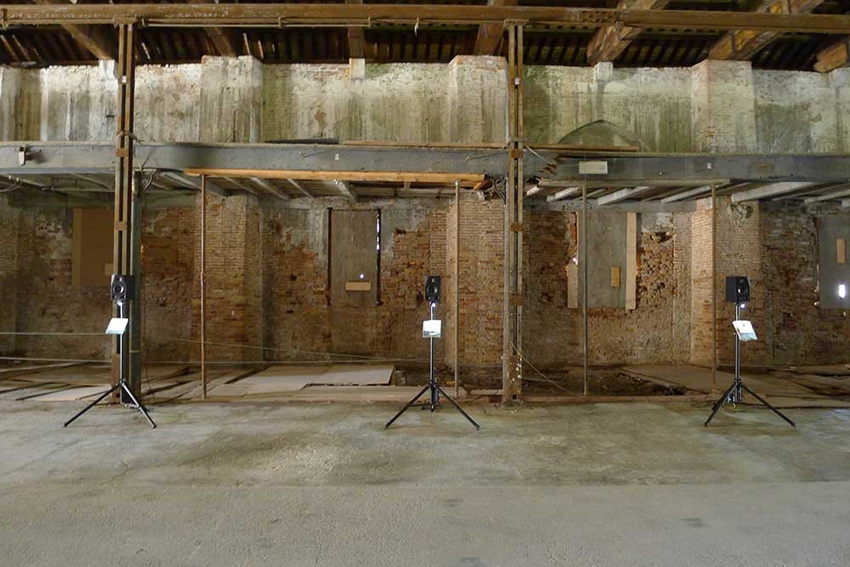ArtReview sent a questionnaire to artists and curators exhibiting in and curating the various national pavilions of the 2015 Venice Biennale, the responses to which will be published daily in the lead-up to the Venice Biennale opening.
Alfons Hug is the curator of the Latin American pavilion. The pavilion is in the Arsenale.
What can you tell us about your exhibition plans for Venice?
The Latin American pavilion in the Arsenale will exhibit 17 indigenous languages in a huge sound installation.
The indigenous population of Latin America totals approximately 28 million people, which means a 6% of the total population. Amerindian languages are used in all 20 countries with the exception of Cuba, Haiti and the Dominican Republic. There are 600 altogether, corresponding to a 10% of the idioms existing in the world. About a third of them are threatened with extinction, and another third are in a critical situation. The languages Quechua (Peru, Ecuador, Bolivia), Guarani (Paraguay), Aymara (Bolivia, Chile, Peru) and Nahuatl (Mexico) each have several million speakers; in the case of Arara (Brazil), Bribri (Costa Rica), Pipil (Honduras) and Chorote (Argentina) there are fewer than a thousand speakers.
More than 150 languages are spoken in Brazil, compared to only a handful in some Central American countries. 85% of the languages that originally existed in the year 1500 are already extinct. The Yamana language in Tierra del Fuego is spoken by no more than one single person: Cristina Calderón, who was born in 1938 in Puerto Williams (Chile). With every extinct language disappear not only a valuable linguistic heritage, but also a genuine perspective of the world and environment. Given this dramatic situation, it is a hopeful sign that a new indigenism can be observed in most countries of the continent, and traditional ways of life are being seriously discussed. This applies not only to Bolivia, Ecuador and Venezuela, but also to Brazil and even Argentina.
Are you approaching this show in a different way as to how you would a ‘normal’ exhibition?
Since there are no visual elements, this will be a very different exhibition. On entering the space intentionally maintained austere, visitors will first hear a vague, polyphonic murmuring of all the voices together, a tapestry of sound reminiscent of a sacred space; they will then approach the individual loudspeakers through which every single language will be clearly audible. Individual text signs will give hints about the content and cultural background of each language.
The radical reduction of the installation to sound only demands intense concentration on the part of the visitors; the more the listeners are willing to immerse themselves in the cosmos of rare languages, the more visual elements can be dispensed with. It is also noteworthy that all the artists are participating in a collective work that knows neither hegemony nor rank.
What does it mean to ‘represent’ your country? Do you find it an honour or problematic?
We are in a privileged position in that we do not represent a single country, but an entire continent. Therefore there is no danger of nationalism.
How are you approaching the different audiences who come to Venice – the masses of artists, gallerists, curators and critics concentrated around the opening and the general public who come through over the following months?
Venice has a very demanding public, even after the preview crowd has left. It is still the most important biennial in the world. This is why I am convinced that our message will reach everybody.
What are your earliest or best memories of the biennale?
The earliest memories are of the ‘Aperto’ show, which opened up the Biennale to independent curating in the Arsenale, and the best memories are those hidden treasures that you will only find in Venice in some of the national pavilions from remote countries that lie off the beaten tracks.
You’ll no doubt be very busy, but what else are you looking forward to seeing?
Apart from the Giardini and Arsenale shows I also hope to be able to see a few of the collateral events.
How does a having a pavilion in Venice affect the art scene in your home country?
Participating in our pavilion has given Latin American artists greater visibility. This goes especially for artists from smaller countries, for example in the Andes, the Caribbean or Central America who are rarely visited by international curators.
Read all responses to the Venice Questionnaire 2015 edition published so far
Read all 30 responses to the Venice Questionnaire 2013 edition
Online exclusive published on 1 May 2015.
